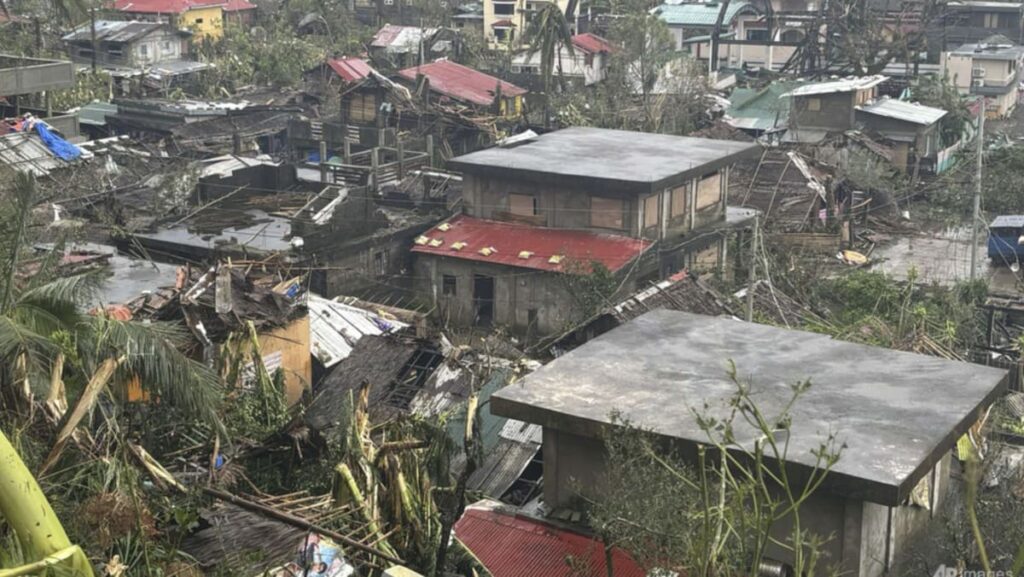Mother-of-three Marissa Cueva Alejandro, 36, who grew up in Catanduanes and sheltered with a relative during Man-yi, said typhoons were getting stronger.
“Before, we would only experience (typhoon) signal number three to four, but now typhoons are getting as strong as signal number five,” she said, referring to the weather service’s five-tiered wind warning system.
Man-yi is the sixth storm in the past month to batter the archipelago nation. At least 163 people died in the previous storms, that also left thousands homeless and wiped out crops and livestock.
Climate change is increasing the intensity of storms, leading to heavier rains, flash floods and stronger gusts.
About 20 big storms and typhoons hit the Southeast Asian nation or its surrounding waters each year, killing scores of people, but it is rare for multiple such weather events to take place in a small window.
RESORTS DESERTED
The weather forecaster has hoisted its second-highest typhoon signal over several provinces stretching from Luzon’s east coast, where Man-yi is expected to make its second landfall, across to the western side of the island where it will exit.
Around 2,000 people were in emergency evacuation shelters in Dipaculao municipality in Aurora province.
Others have stayed home to protect their property and livestock, or because they were sceptical of the warnings, said Geofry Parrocha, communications officer of Dipaculao disaster agency.
“Some of our countrymen are really hard-headed. They do not believe us until the typhoon arrives,” Parrocha told AFP.
Tourists emptied out of coastal resorts ahead of the typhoon.
“Our facilities are deserted,” said Irene Padeo, reservation officer of the L’Sirene Boutique Resort in Baler town in Aurora, shortly before Man-yi was due to make landfall in neighbouring San Luis.
“Our outdoor items have all been packed and taken indoors. We tied down all the rest.”
On its current trajectory, Man-yi will cross north of Manila and sweep over the South China Sea on Monday.
Man-yi hit the Philippines late in the typhoon season – most cyclones develop between July and October.
Earlier this month, four storms were clustered simultaneously in the Pacific basin, which the Japan Meteorological Agency told AFP was the first time such an occurrence had been observed in November since its records began in 1951.
Read the full article here


